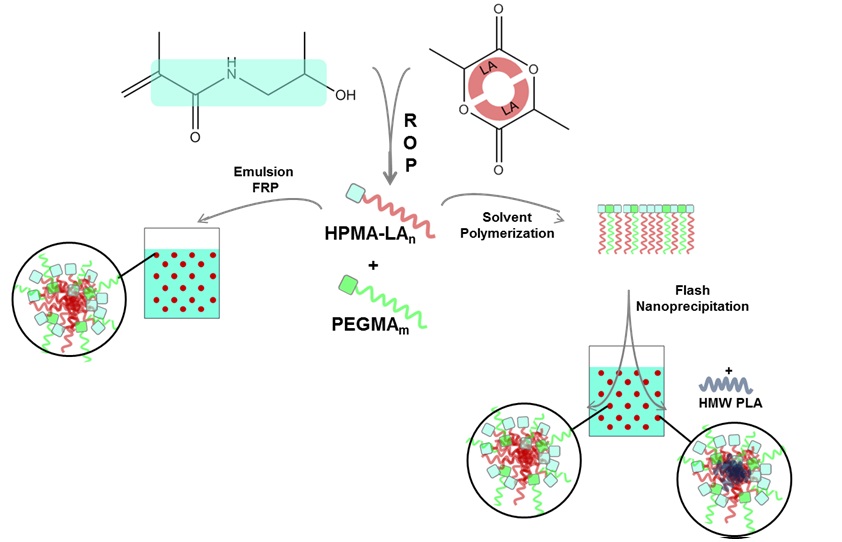HPMA-based materials for protein delivery and cell encapsulation
Student Projects
Bachelor or Master theses are offered for this project. Please, contact the responsible researchers for detailed information
Project Objectives
- Well reproducible synthesis of HPMA-based materials
- Formation of an injectable delivery system in mild conditions
- Synthesis of a 3D structure for cell encapsulation in mild conditions
Project Description
Polymers find many applications in the biomedical field due to the possibility to easy control their properties both at the macro- and nano-scale. In this light, there is a big request of biocompatible materials that can offer both biocompatibility and reproducible behavior compared to the system nowadays used (e.g. collagen). The aim of the project is to exploit the possibility offered by the FDA approved poly(HPMA), a water soluble, non immunogenic and biocompatible polymer, which, can be easily functionalized pre- and post-polymerization even leading to complexes 3D structures.
Two different applications will be investigated in the project, from one side, it will be explored the possibility to produce HPMA-based nanoparticles, with tunable properties as size, surface charge and lipophilicity/hydrophilicity balance. This polymeric dispersion will be destabilized to obtain a yogurt-like material for the controlled protein delivery. From the other side, polymer chains will be produced through solvent polymerization and then functionalized to obtain a 3D hydrogel upon cross-link formation. The adoption of the polymer as environment for the cell growth should first ensure the reproducibility of the cell growth and proliferation. To get this achievement a well-controlled polymer synthesis is required and, in addition, the gelation process should happen in mild condition thus ensuring cell encapsulation and proliferation.
The project mainly focuses in the production of materials for drug delivery applications by using techniques related to polymer synthesis (emulsion polymerization, ring opening polymerization, chemical modification, controlled aggregation) and characterization (DLS, NMR, SEC, MALDI).
Contact Person: Raffaele Ferrari

